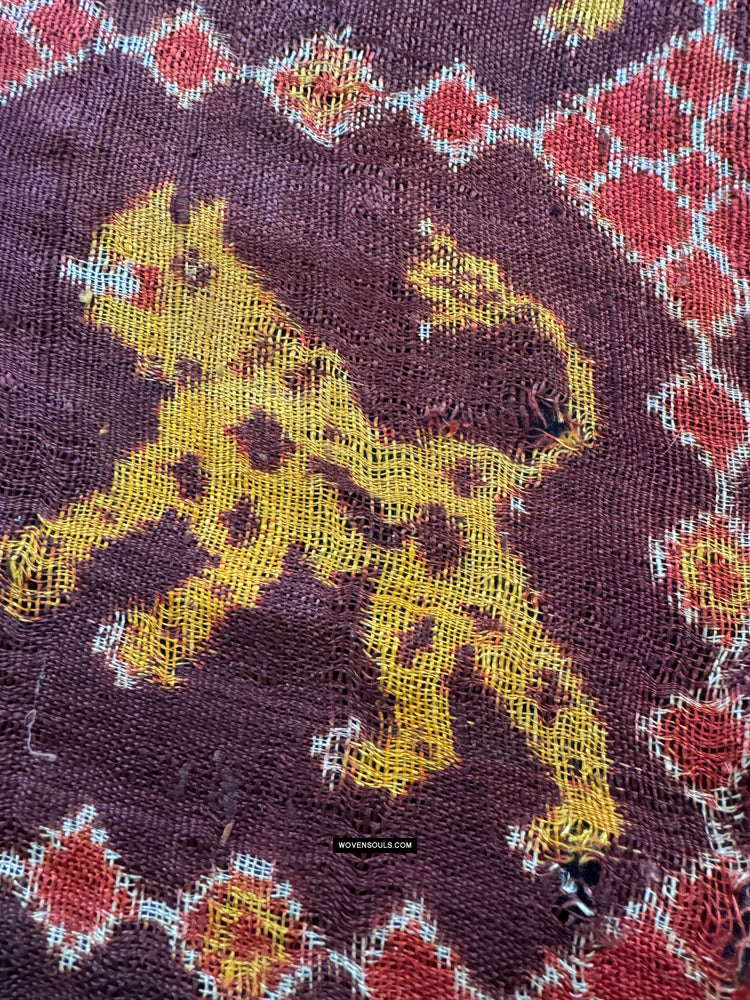1985 Antique Heirloom Patan Patola Double Ikat Sari Fragment Elephant Tiger motif
Rare Antique Heirloom Patan Patola Double Ikat Indonesian Trade Textile Elephant Tiger motif
This extremely fine example of double Ikat is a fantastic piece with 5 rows and 18 columns of animals.
A total of 40 tigers and 50 elephants with mahouts have been woven in.
The value of a Patan Patola is directly proportional to the number and diversity of motifs used in it as this increases the complexity of the dyeing process during the creation.
Woven in India for the Indonesian market. this is known as a ‘patolu’ (pl. ‘patola’). This type of woven silk was a speciality of Gujarati weavers that required that they tie and dye the warp and weft threads in patterns and then weave them together to create a pattern on both sides of the cloth.
In Indonesia ‘patola’ were intended for use by the elite. They were worn by members of the nobility, and at times subject to court laws prohibiting their use by commoners.
Microscopic examination of the fibres [see photo] and the weave reveal a uniqueness not found in other more recent antique patolas.
Do study the micro-close-ups and see 1) how the hand-spun yarn thickness varies 2) How the dyeing has been done prior to the weaving in both directions.
Uncomparable ancestral heirloom piece. Rare.
Estimated to be from the 1800s or earlier.
357 x 101 cm
LITERATURE REFERENCE:
Examples of younger Patolas may be seen
1. On pages 14 & 27 in 'Indian Textiles' by John Gillow & Nicholas Bernard
2. Page 42-49, "Tradition and beyond, Handcrafted Indian Textiles" by Rta Kapur Chishti / Rahul Jain
3. Museum Example that is almost identical: AGNSW: Link
4. Museum Example that is almost identical: AGSA: Link
5. Museum Example : V & A : Link
Fragile condition.
Holes and damage present - and yet it is miraculously complete!!
MY NOTES: 1) My guess is that there are fewer than 20-25 such surviving patolas with the tiger motif in the world, with most in museum collections that will probably never come up for sale. 2) An examination of the close-ups of this textile and the comparison of this with others publicly viewable in museum collections leads me to believe that this one is older.
3) Finally - these look more like Cheetahs than like Tigers .. because these have spots and tigers have stripes. And Cheetahs were native to North-West India until the 1950s. What do you think?
4) In a small town in Sri Lanka I found a framed print of an Indonesian family with a similar ikat patola textile in the background.
***
***
This item has spent a lifetime being used for the purpose of its creation with the original artist/user. Signs of this life lived heartily may be present on the piece in the form of stains, thread loss, loose threads, holes, tears, color run and other imperfections. Therefore the condition must be assumed to be “not” perfect. More photos of such imperfections will be provided on request.
***
































































































































